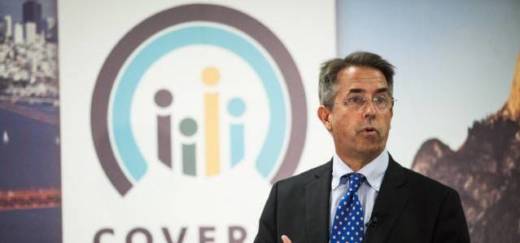Peter V. Lee: We're in the very end of open enrollment. Many people are confused because in much of the country open enrollment ended Dec. 15. We’re open through Jan. 31 -- the end of the month.
Anyone that doesn't have insurance should come to our website and check it out. Three-quarters of those eligible don't know (that they're eligible).
Click on “find help near me,” and you can find a local insurance agent. They're always going to be free. We have people that speak Cantonese, Spanish, and they all speak insurance.
Right, it feels like another language. You released numbers this past Monday showing how many people enrolled for the very first time, and those numbers are up from this time last year. Why do you think that is?
Lee: This last year has been sort of crazy -- a lot of roller-coaster effects. We've done everything we can to have things be stable for consumers.
One of the reasons we've seen more people sign up is it's cheaper for many people. About 1.1 million of California consumers get financial help, which lowers their premiums. For them, their health care costs went down 10 percent.
For those for whom it's not cheaper, which means they don't get a subsidy, it may be on average 10 percent more expensive than last year.
We're out there pounding the pavement, we're running ads, we're getting the word out through social media, through radio and through TV. People are getting the word out.
This is the fifth year for open enrollment, and at this point we've become a pretty well-known brand in California. People are used to hearing about us and they come back.
What percentage of people on Covered California get subsidies?
Lee: There's two numbers. First, the individual market has about 2.5 million people. Half of them buy direct from their health plans.
You can only get a subsidy if you buy from us. So at Covered California about 85 percent of the people that sign up with us get a subsidy.
You released a report on Jan. 18 predicting that individual insurance markets in all states would see rate hikes in 2019 between 16 and 30 percent. And you called it a "roller coaster for consumers." How will that impact California in 2019?
Lee: First, that projection is for next year. I want to be really clear that for Californians shopping now that get subsidies, their rates went down in 2018.
But nationally there's removal of the tax penalty [for not buying insurance]. Projections are that some healthier people will drop out of buying insurance. On average, that would increase premiums in California probably eigh,t percent on top of underlying health care costs. So we might see premiums go up next year by 15 percent in California. In other states, it could go up 30 percent or more.
What is your plan for keeping Covered California afloat in the future?
Lee: Number one: Covered California is totally afloat. The worst case is, and this is bad, there might be a few hundred thousand fewer Californians with health insurance.
The penalty being there, or not being there, isn't the glue that holds the Affordable Care Act together. We're here for the long haul and we operate like a business. We've got hundreds of millions of dollars in reserves. We use zero state funds, and zero federal funds. So we're a going proposition.
The issue for 2019 is what this means for people that get no subsidies. They will be saying, “Holy mother of God, I got a 15 percent rate increase!"
What would you like to add?
Lee: This last year, there were interminable attempts to repeal and replace [the Affordable Care Act]. Didn't happen.
One of the things that I am most surprised by is how much the health care debate has changed from six years ago before the Affordable Care Act. People took for granted that we could be in a world where, if you had diabetes or asthma or cancer, you could be denied getting health care forever. No one wants to go back to those days. That's a huge change.
